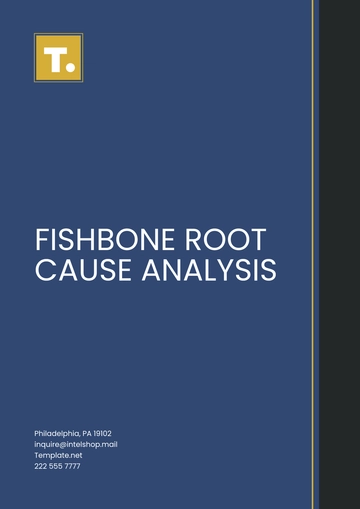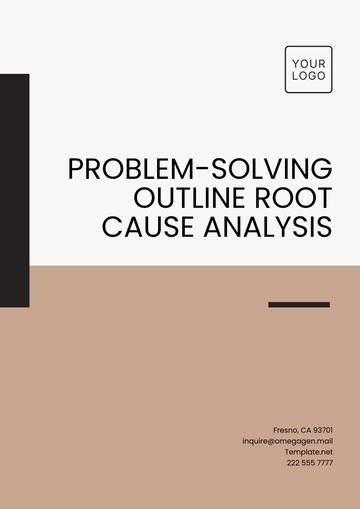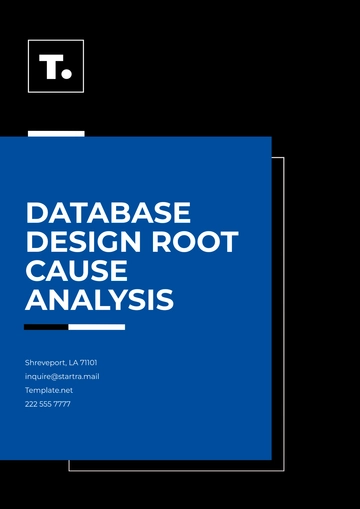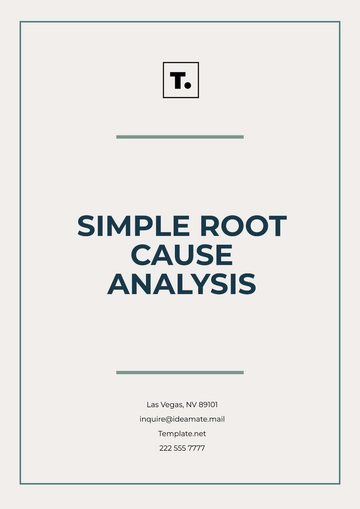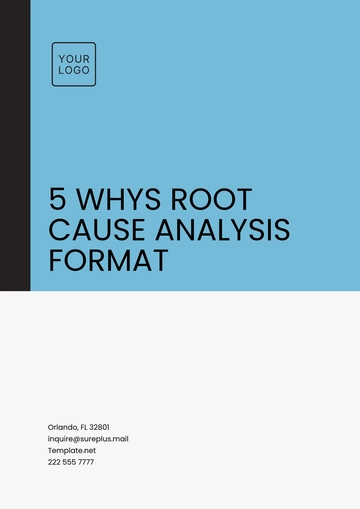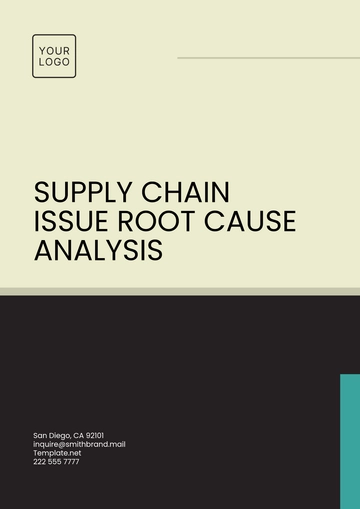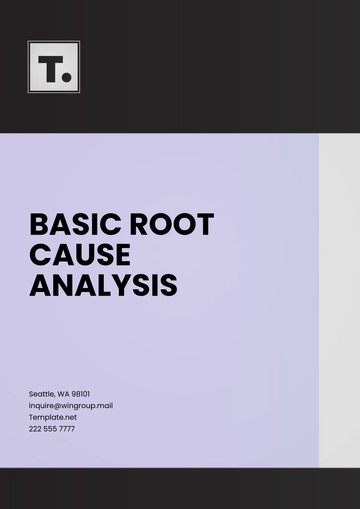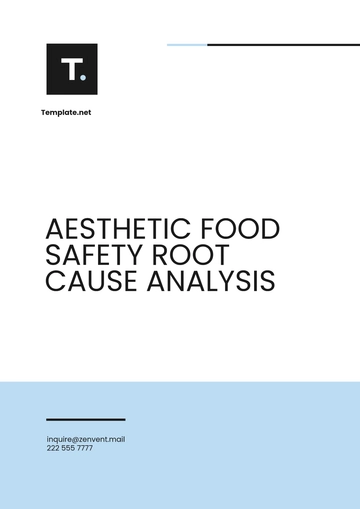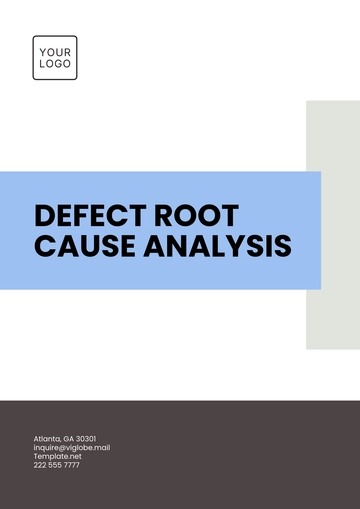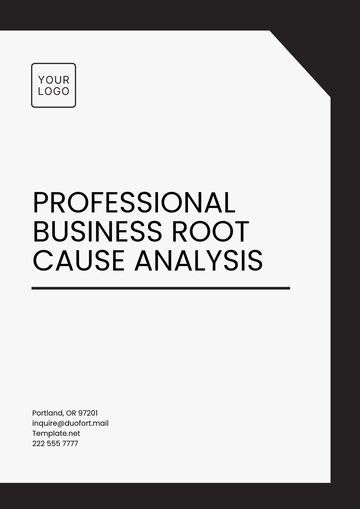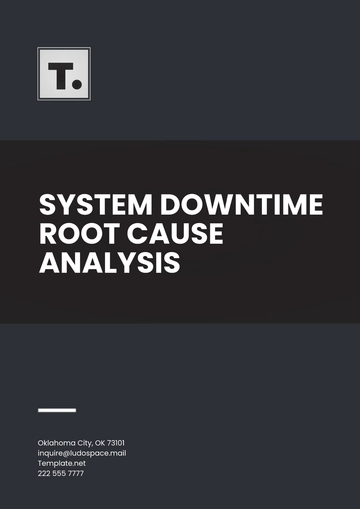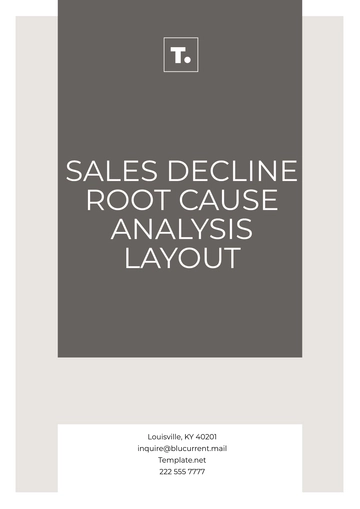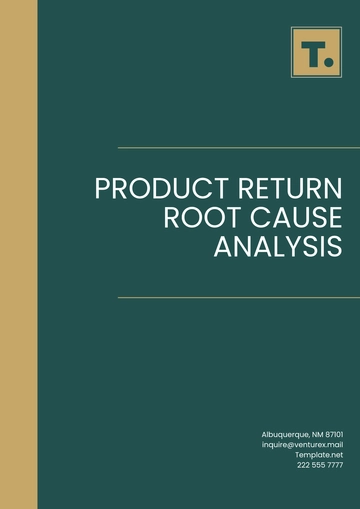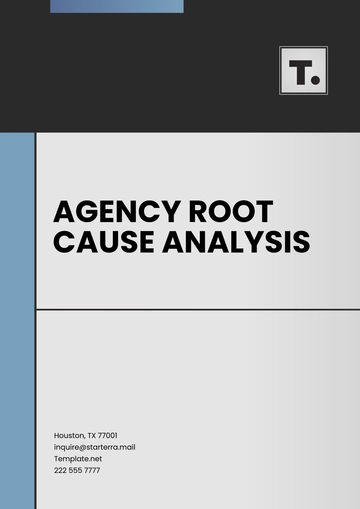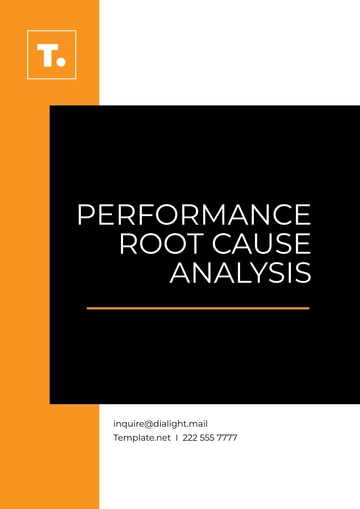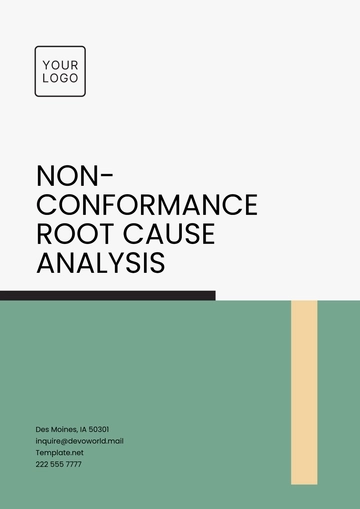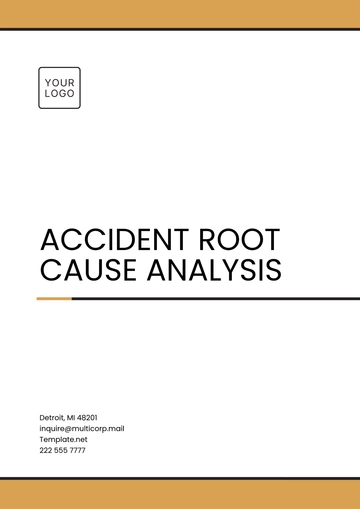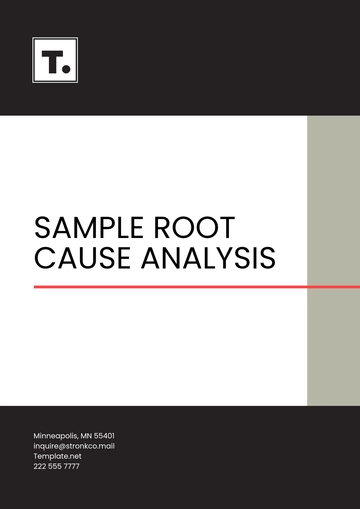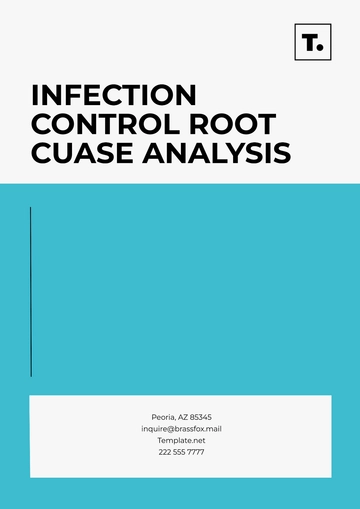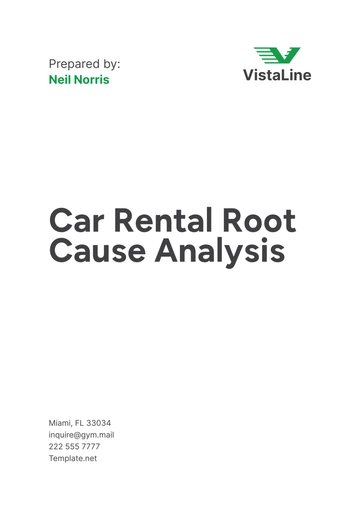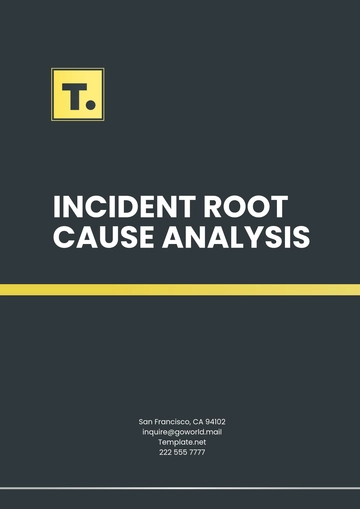WORKPLACE INCIDENT ANALYSIS OUTLINE
I. Introduction
A. Purpose of the Analysis
To thoroughly investigate the workplace incident that occurred on [July 3, 2050], at [Your Company Name], aiming to identify root causes and propose effective measures to prevent future occurrences. This analysis will assist in enhancing the overall safety and operational efficiency of the workplace.
B. Scope of the Analysis
The analysis covers the incident timeline, involved parties, environmental factors, and operational procedures in place at the time of the incident. It includes a review of safety protocols and employee training effectiveness.
Incident Overview
A. Description of the Incident
On [July 3, 2050], at approximately [10:15 AM], a machinery malfunction led to a minor explosion at [Your Company Name]'s main manufacturing facility, resulting in two minor injuries and a temporary suspension of operations. The incident primarily occurred in the assembly line area, causing considerable alarm among the staff.
B. Immediate Response
Evacuation protocol was initiated within [3 minutes] of the incident, demonstrating the staff's prompt reaction to emergencies. Emergency services were contacted at [10:18 AM] and arrived by [10:25 AM], showcasing effective communication and coordination in crisis.
Data and Analysis
A. Incident Timeline
Time | Event Description |
10:15 AM | Machinery malfunction detected |
10:16 AM | Evacuation alarm triggered |
10:18 AM | Emergency services contracted |
10:25 AM | Emergency services arrived on-site |
This timeline provides a clear sequence of events, highlighting the rapid response to the incident.
B. Involved Parties
Employee 1: Operator of the malfunctioning machinery, experienced and trained in machinery operations.
Employee 2: A nearby worker injured during the incident, received immediate medical attention and is under observation.
C. Environmental and Operational Factors
Weather conditions: Clear and sunny, which ruled out weather as a contributing factor to the incident.
Machinery maintenance records indicate the last servicing on [June 15, 2050], suggesting a need for more frequent inspections.
Root Cause Analysis
A. Equipment Failure
Preliminary investigations suggest a mechanical failure in the machinery's cooling system, possibly due to wear and tear.
B. Human Factors
Analysis of operational protocols and employee statements to determine if human error contributed to the incident, including possible oversight or misjudgment.
Impact Assessment
A. Physical Injuries
Two minor injuries were reported, with expected full recovery; no critical injuries, highlighting effective safety measures.
B. Operational Downtime
Estimated loss of [48 hours] of production, equating to approximately [$120,000] in revenue, impacting the company's short-term financial goals.
Recommendations for Future Prevention
A. Machinery Upgrades
Proposal to upgrade machinery with advanced safety features, including automated shutdown systems.
B. Training and Awareness
Implement regular safety training sessions for employees to foster a culture of safety and awareness.
Conduct monthly drills to ensure preparedness for similar incidents, improving reaction time and coordination.
Conclusion
A. Summary of Findings
The incident was primarily caused by equipment failure, compounded by a lack of recent safety drills, highlighting areas for improvement.
B. Next Steps
Implement recommended safety upgrades and training programs to mitigate similar risks in the future.
Schedule a follow-up review in six months to assess the effectiveness of new measures and make necessary adjustments.
Health & Safety Templates @Template.net

